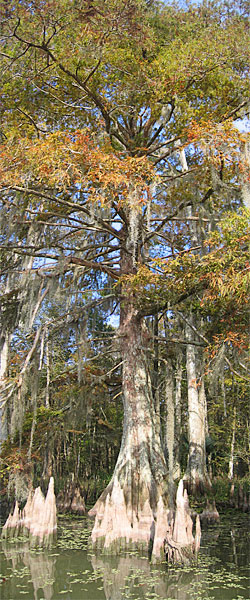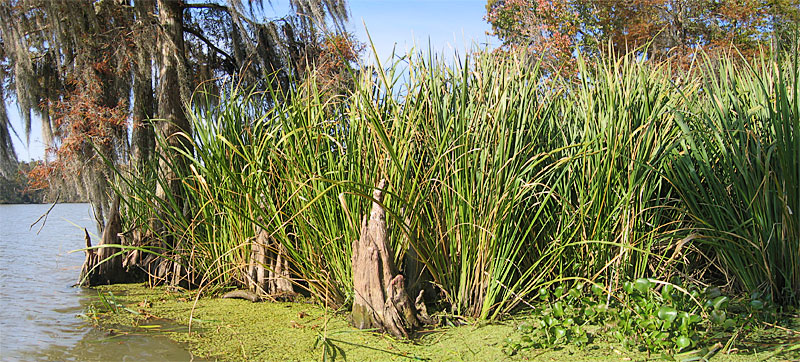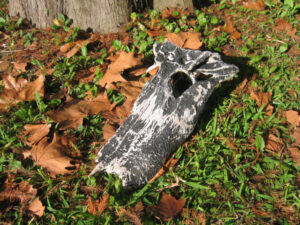
Nov 30 & Dec 1, 2007—School visits in Louisiana led me to a small cabin on Bayou Long, the tail end of Belle River’s water flow in Stephensville, just outside Morgan City, 90 miles west of New Orleans. The sweet-voiced cabin owner, Anthony, had said in the dead of night when I arrived, “Don’t worry about the alligators, it’s way too cold tonight…” And he was right as I only saw a skeleton during my stay. (www.cajunhouseboats.com)


After a great school visit to Berwick Elementary (followed by a tremendous school-wide Vocabulary Parade), I set out in the cabin’s small canoe, pleased that I figured out how to solo paddle the wide bottomed impossible little boat. (How? After much spinning I finally straightened her out with a deep stroke from the stern angling nearly under the boat, ending with a quick steering pry on each paddle.)

The morning mist had just lifted when I set off north, hugging the bank of the camp cabins lining one side of the bayou (the other side is wild), then out to an island ringed in cypress trees. With no wind and glassy water I slid along as quiet as any water snake — which were on my mind as I’d been warned to be careful stepping or turning anything over.

The cypress trees have a near magical presence. Very slow growing they stand in shallow water, rising up out of great skirts of trunks, often twisted ever so slightly so as to seem to be turning. They are surrounded by “cypress knees,” the up-turning roots of the great tree, knobby topped, standing two to four feet high, ringing the big trunks. Watermark lines on their trunks recorded the low water of the current southeastern drought.
Like Minnesota’s long-gone Big Woods of hardwoods, this watery country once held the greatest cypress forest in North America. In my little cabin a poster proclaims: FB Williams Cypress Co. Ltd, The Largest Cypress Mill in the World, Patterson, LA, 1902 – 1934. Thirty-twoyears. It took about the same amount of time to harvest the great hardwood forests of the upper Midwest, much of which also ended up shipping out of New Orleans to the rest of the world.

Whenever I am in the presence of something that grows very slowly, like the giant redwoods, or carpet lichen, there is a kind of patience that seeps into my eyes, then down into my heart. A momentary borrowed quiet sets in. This is what happened here on the bayou.
Everything about this paddle was liquid — the glassy water and its reflecting flashes up the trunks of the great trees, the high fluid lines of a hundred ducks, black, drawing lines across the sky, followed by the changing floating “V” of the white pelicans, flashing white, then wing-tipped black. The cypress trees are hung thick with Spanish moss so edges are softened and even the smallest breeze is evident, eddying like water around draped limbs high above.
Even on December 1st it’s still fall here on the bayou and the leaves are browns, dark burnt golds, pale orange, many floating in the mirrored water. A white heron lets me paddle only so close before raising giant wings. It is so quiet I hear duck wings pounding air as they draw over.
The next morning I tired to repeat the same paddle. A gusty wind came up and the little flat bottomed canoe could barely fight back. Hunters flooded the islands, orange vested, roaring around in silver boats. Successive gun shots rang deep in swampy woods. Not to be mistaken for a canoeing deer I tied an extra orange lifejacket to my waist and set off for home.
This is why they say you can never step in the same river twice. Every river is always different, moment to moment, day to day. Fortunately, I still carried yesterday’s stillness, deeper than gunshots. Then suddenly all the hunters roared off, as if someone had blown a whistle. The wind died. A huge eagle caught sight of something flashing in the water and the quiet hunters took over. I paddled home.

